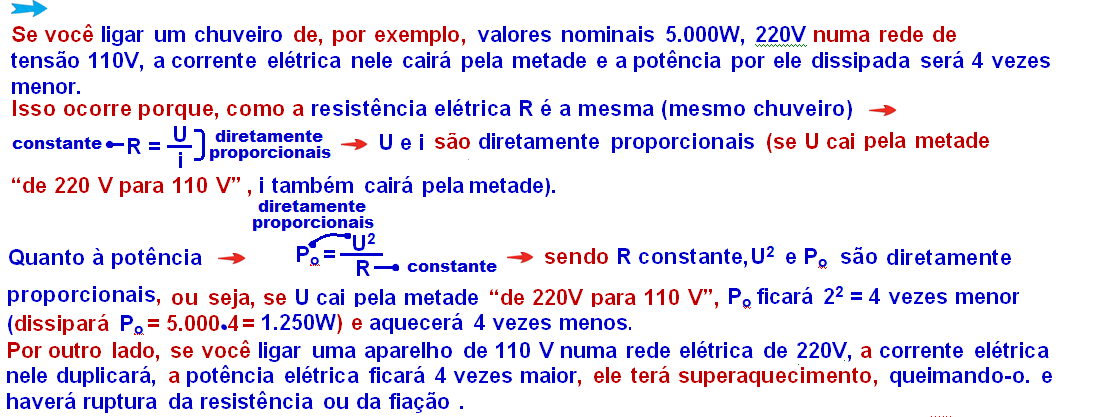Resistors – Ohm’s First Law EN
RESISTORS – OHM’S FIRST LAW
Resistors – Ohm’s First Law – Electrical Power of a Resistor
Joule effect
 And as Joule does in a metallic conductor , the free electrons of the electric current, during their movements, continually suffer collisions with the atoms of the crystal lattice of this conductor, transferring part of their kinetic energy to them and, as a result, the atoms of the conductor, as a whole, begin to vibrate with greater energy.
And as Joule does in a metallic conductor , the free electrons of the electric current, during their movements, continually suffer collisions with the atoms of the crystal lattice of this conductor, transferring part of their kinetic energy to them and, as a result, the atoms of the conductor, as a whole, begin to vibrate with greater energy. ![]()

This increase in the “vibration level” of the conductor’s atoms causes an increase in its temperature, causing it to release thermal energy (heat). This phenomenon is called the Joule effect.
Generators and receivers
 Generators In electrical circuits there are, in addition to other elements, generators whose function is to
Generators In electrical circuits there are, in addition to other elements, generators whose function is to ![]() transform any type of energy into electrical energy. Examples: batteries , in
transform any type of energy into electrical energy. Examples: batteries , in

which convert chemical energy into electrical energy. In hydroelectric plants, the mechanical energy of moving water is transformed into electrical energy, through generators, etc.

Resistors



 One ohm (1Ω) is the value of electrical resistance between two points P and Q of a conductor when, under a potential difference of 1 volt (1V ), a constant electric current of 1 ampere (1A) flows through it .
One ohm (1Ω) is the value of electrical resistance between two points P and Q of a conductor when, under a potential difference of 1 volt (1V ), a constant electric current of 1 ampere (1A) flows through it .
 Symbolic representation of a resistor:
Symbolic representation of a resistor:


The greater the slope of the line, the greater the angle, and therefore , the greater the resistance of the conductor (resistor).
Electrical power of a resistive conductor (resistor)


What you should know, information and tips

We must note that the electrical resistance of the resistor depends only on the resistor and its temperature and that 1 W = 1 V.1 A.
![]()
We often use multiples of the ohm 1kW = 103 W and 1 MW = 106 W.![]()
![]()
Most metals are ohmic resistors when their temperatures are kept constant.
because, the higher the temperature of these resistors, the greater the vibratory movement of their molecules and atoms, making it difficult for the electric current to pass through (movement of free electrons) and thus increasing their electrical resistance.
![]()
The electrical resistance of a conductor depends on the points where you are measuring the potential difference . Thus, for the same voltage U , the greater the distance between the two points, the greater the value of the electrical resistance and consequently the lower the value of the electric current i, since, in this case, in the expression R=U/i, i is inversely proportional to R, with U remaining constant.
![]()

![]()

![]()
Electric current always flows from the highest to the lowest potential, as there is “loss” along the way , that is, transformation of electrical energy into thermal energy (the “Joule effect”), leaving the final potential lower than the initial one.
![]()
One ohm (1Ω) is the value of electrical resistance between two points P and Q of a conductor when, under a potential difference of 1 volt.

Superconductivity is the name given to the phenomenon by which the resistance of certain metals disappears at very low temperatures.
A conductor that has zero resistivity (proportion to resistance) is called a superconductor.
The temperature at which a metal becomes a superconductor is close to absolute zero and varies from metal to metal.
To date, few metals have demonstrated this phenomenon. Examples include mercury, which becomes a superconductor at 4.19 K; thorium, at 1.4 K; and lead, at 7.2 K.





![]()
An electric shower sometimes takes a while to start heating up, as the water pressure connects the electrical contacts through a diaphragm.


